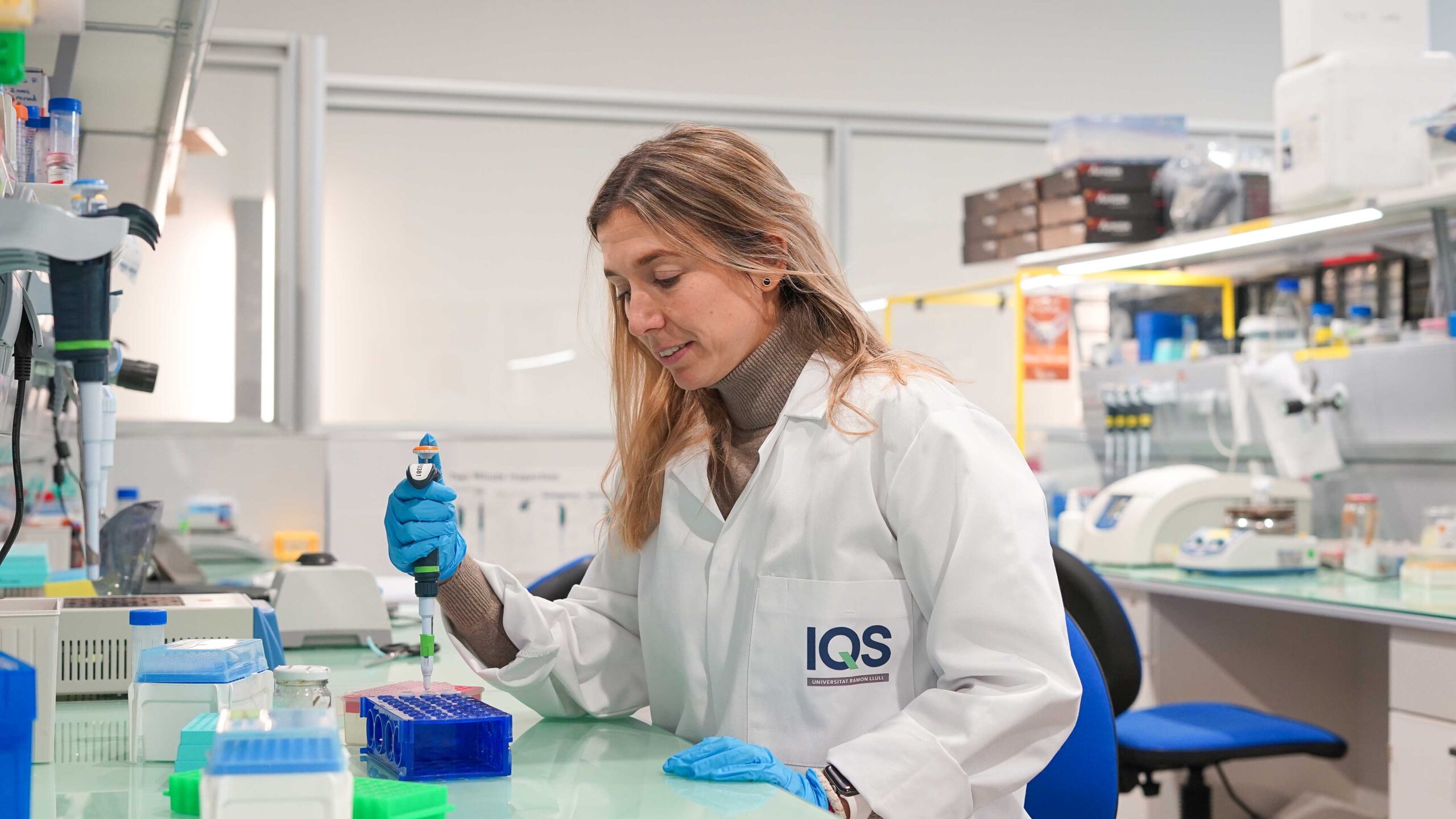Extracellular vesicles (EVs) are a heterogeneous set of particles released by cells themselves, with intercellular communication functions through the transport of proteins, lipids, or nucleic acids. The release of EVs in the extracellular environment occurs both under physiological conditions and in the presence of a disease, but the composition of the EVs changes depending on a person’s health condition. This fact, together with their involvement in many biological processes (such as intercellular communication) and their biomolecule transfer capabilities, makes them excellent natural carriers to be used in the release of drugs and genes in a controlled manner to treat different diseases, such as in cancer immunotherapy.
Within the Materials Engineering Group (GEMAT) at the IQS School of Engineering, Dr Cristina Fornaguera Puigvert is leading a line of research on the use of extracellular vesicles, the cellular communication structures of our body, as an alternative to designing therapeutic vaccines for cancer immunotherapy applications in accordance with the MISEV 2023 guidelines. Vaccines with EVs open new perspectives for applications in the fight against cancer and represent an alternative to the use of polymeric nanoparticles, another area of expertise of the GEMAT group and Dr Fornaguera herself.
Related publications
– Carla Giacobina, Marta Canta, Cristina Fornaguera, Salvador Borrós, Valentina Cauda, Extracellular vesicles and their current role in cancer immunotherapy, Cancers 2021, 13(9), 2280.
– Mònica Guarro, Francisca Súñer, Martí Lecina, Salvador Borrós, Cristina Fornaguera, Efficient extracellular vesicles freeze-dry method for direct formulations preparation and use, Colloids and Surfaces B: Biointerfaces, 218, 2022, 112745
MISEV – Minimal Information for Studies of Extracellular Vesicles
Dr Fornaguera forms part of the International Society for Extracellular Vesicles (ISEV), the world’s largest community of experts that hosts nearly 2,000 researchers and scientists who study and employ these extracellularly secreted vesicles.
EVs are highly-complex structures, and their arrival on the market in a therapeutic way is conditional on a standardization of their properties, isolation, and maintenance, among other characteristics. For this harmonization in their use, the ISEV has regularly published, for a decade, the minimum information to reach this information, known as MISEV guidelines – Minimal Information for Studies of Extracellular Vesicles. These guidelines provide researchers with a snapshot of the different approaches available and the advantages and limitations for the production, separation, and characterization of EVs from multiple sources, including cell cultures, body fluids, and solid tissues.
Alongside more than 1,000 global experts, Dr Fornaguera has contributed to drafting the latest MISEV 2023 edition, which compiles comments from the different ISEV working groups to convey the current state of research with EVs and offer a unified vision of research and the use of EVs, shared by all researchers.
In addition to presenting the latest advances in basic principles of EV research, MISEV 2023 also includes advanced techniques and approaches that are currently pushing the boundaries in this area of expertise, such as EV release and adoption sections, or in vivo studies of EVs..










